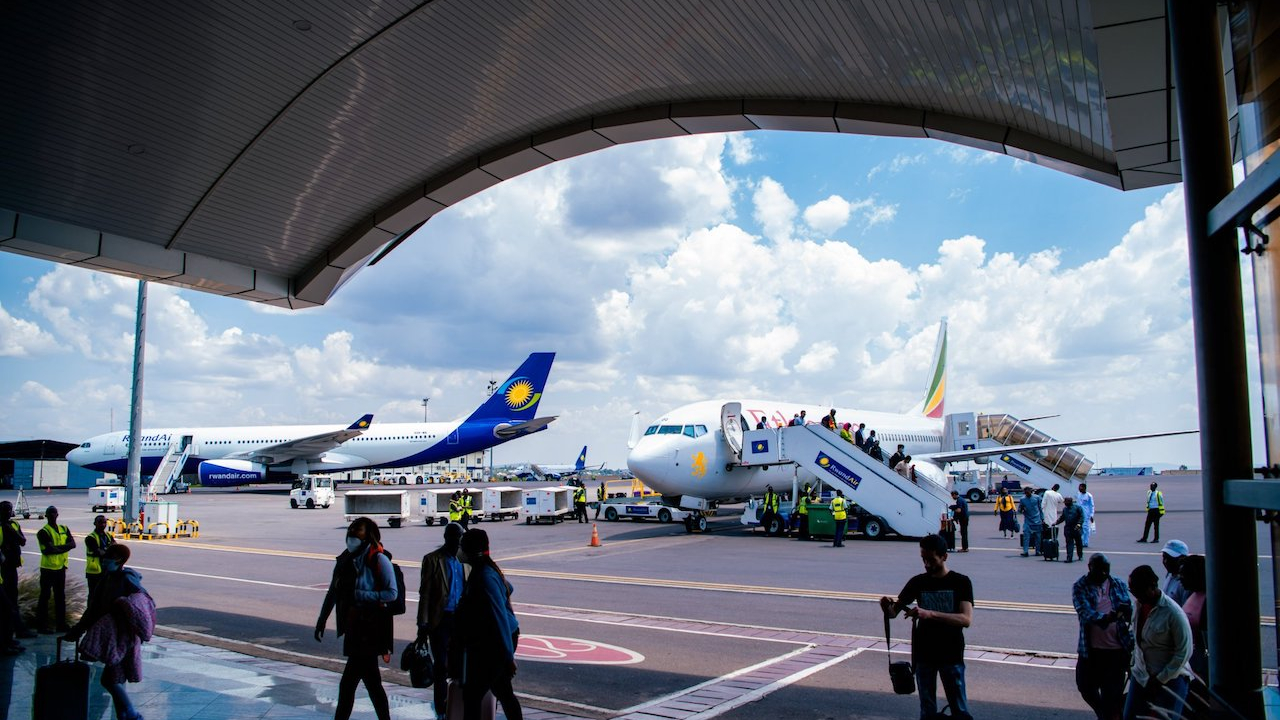The airfield of dreams
A new greenfield airport is under construction - designed to deliver an African hub for eight million passengers annually.

Handle with care: Today's Kigali International Airport must handle rising traffic volumes with its small terminal until NKIA opens. IMAGE: Rwandan Airports Company
In 2028 Rwanda hopes to have a shiny new airport as the country seeks to take another big step forward in its ambitions to create an African hub for travellers and cargo.
The New Kigali International Airport (NKIA) will not simply be a world-class airport, but the plan is to develop an airport city around it, featuring a logistics zone, education and real estate development, an exhibition centre, and sports, leisure, healthcare and entertainment complexes, explained Jules Ndenga, CEO of Rwandan government holding company Aviation Travel and Logistics (ATL).
Naturally, the priority for the airport’s masterplan is to ensure everything is ready that is required to create a hub with the capacity in its first phase to handle eight million passengers and 150,000 tonnes of air freight annually.
However, “what we did with the airport city concept is to ensure that we plan for everything,” said Ndenga, in terms of reserving land so that co-ordinated investment in developing the various elements of the city can be achieved.
NKIA, which is located 25km southeast of Kigali, is being developed in a partnership with the Qatar Investment Authority (QIA) as the majority shareholder with 60 per cent of the shares while ATL owns 40 per cent.
The earthworks for NKIA’s original design were under way when Doha’s involvement in the airport’s construction entered the picture. The work to prepare the site was not halted, even as a new design with a much larger airport was devised, to keep the project moving, explained Ndenga.
The development is being delivered through two major construction packages: workstream 1 (WS1) and workstream 2 (WS2).
WS1, which is finalised, includes earthworks, runway, taxiways, and aprons, substations, roads, and utility networks. These works are undertaken by Mota-Engil Engenharia e Construção África, SA, under the supervision of Dar [Dar Al-Handasah Consultants (Shair and Partners)].
Dar, a global aviation design consultancy, has been supporting the delivery of NKIA since 2020.
“Combining exceptional aviation planning and design capabilities with an intricate knowledge of Rwanda and its local context, Dar is providing the detailed design and supervising the construction of a greenfield airport that promises to establish Rwanda as a regional hub and a continental gateway to Africa and to the world,” said Elie Kharrat, director of Dar Consultants Rwanda.
Upon opening, NKIA will feature a 120,000 sqm passenger terminal building, offering four-star airport services, in a modern, green and smart environment. The design of the terminal is inspired by the hills that are an ever-present feature of Rwanda’s landscape.
The project is targeting LEED Gold certification from the US Green Building Council, one of the most globally recognised and respected standards for sustainable design. The terminal building is also being assessed by the Building and Construction Authority (BCA) of Rwanda for Green Mark Certification, insuring compliance with all the requirements for a green airport.
The WS2 package is being constructed by the joint venture comprising Urbacon Trading and Contracting Rwanda Ltd as the leader of the JV, Mota-Engil Engenharia e Construção África SA, and Consolidated Contractors Group SAL. Dar continues in its role as consultant supervising the WS2 construction works.
WS2 will cover the development of the terminal building, control tower, cargo terminal and all the airport’s supporting infrastructure for an airport of more than US$2bn in value.
As Rwanda looks ahead to the economic and social ripple effect of NKIA, in addition to the employment impact during construction, today’s Kigali International Airport (KIA) must handle rising traffic volumes with its small terminal until NKIA opens.
KIA handled 1.3 million passengers in 2024, with a target to reach 1.5 million this year, said Charles Habonimana, the airport’s managing director. Since the pandemic, traffic has been growing at eight per cent annually.
KIA’s growth strategy naturally puts flag carrier RwandAir at the centre. “RwandAir is our sister company, and our strategies are aligned. We sit in the same room and discuss how they want to grow,” said Habonimana.
The airport is working with other carriers to increase frequencies on their existing routes, such as Ethiopian Airlines, which now serves Addis Ababa three-times daily from Kigali, Kenya Airways which operates two to three daily flights, as well as Brussels Airlines and Turkish Airlines which operate dailies flight to Kigali from their European hubs, as well as attracting new carriers and adding new destinations.
Qatar Airways returned to Kigali, offering a connection to its Doha hub in mid-June, a service coordinated with RwandAir.
The volume of transit traffic is growing, as intended, as airlines develop connections to wider networks. This is in evidence during the two banks at KIA when the airport can become congested.
“We are working on optimising what we have already, but it wouldn't make sense to invest a lot into the existing airport as commercial flights will be moving,” said Habonimana. “We are looking at how we can use technology as best as we can to make the process more efficient and give passengers the same level of service.”
The airport is witnessing a rise in cargo traffic due to RwandAir’s European flight services, plus the carrier’s dedicated Boeing 737 freighter routes to Dubai and Djibouti, said Habonimana. The airport handled over 20,000 tonnes of freight last year, and expects 25 per cent growth this year.
Much more is expected at NKIA. “Rwandan farmers tell us they need more capacity because they have the products and the market, so it's up to us to match that by building the required infrastructure,” he added.
When KIA’s traffic is transferred to the new airport, the existing airport will continue to serve its private aviation customers and seek to attract new ones.
Stay up to date
Subscribe to the free Times Aerospace newsletter and receive the latest content every week. We'll never share your email address.


